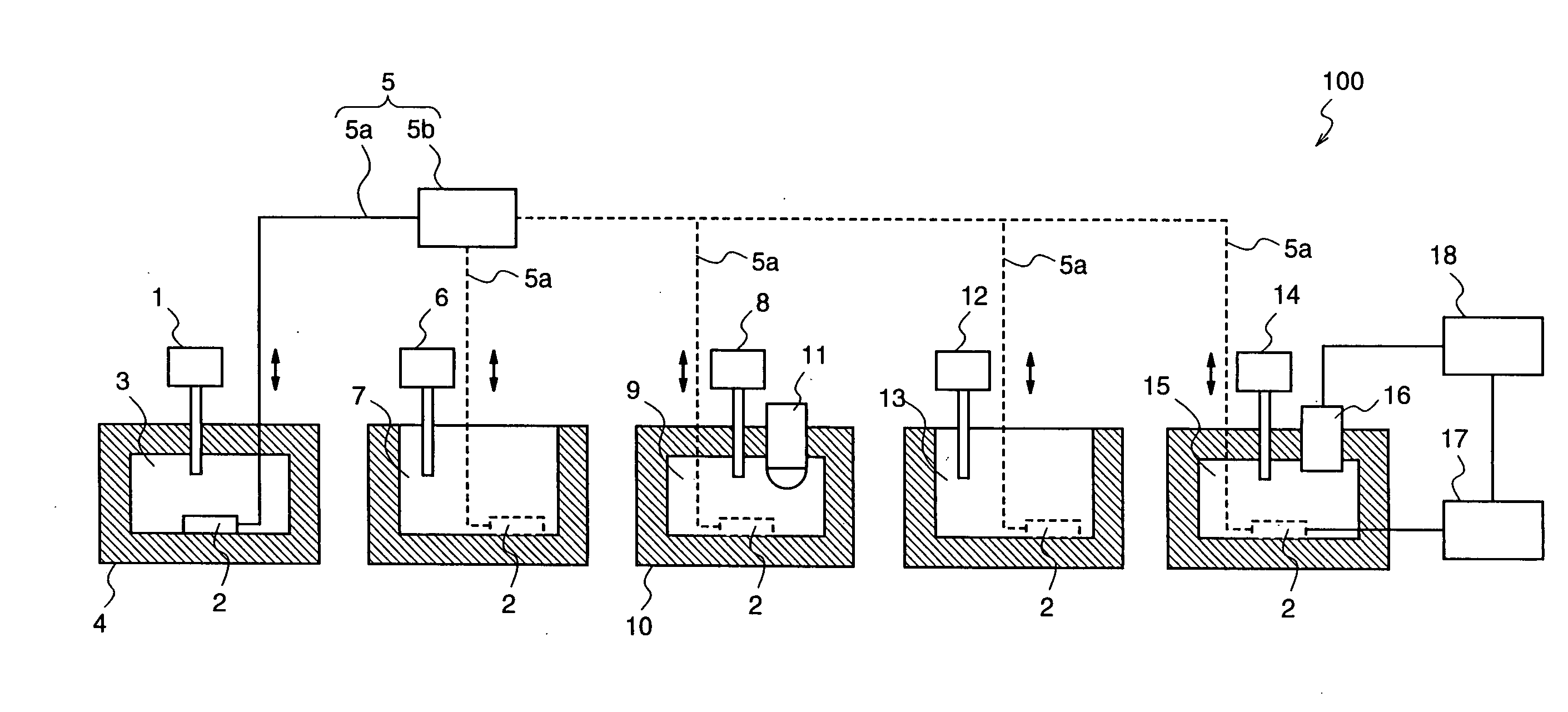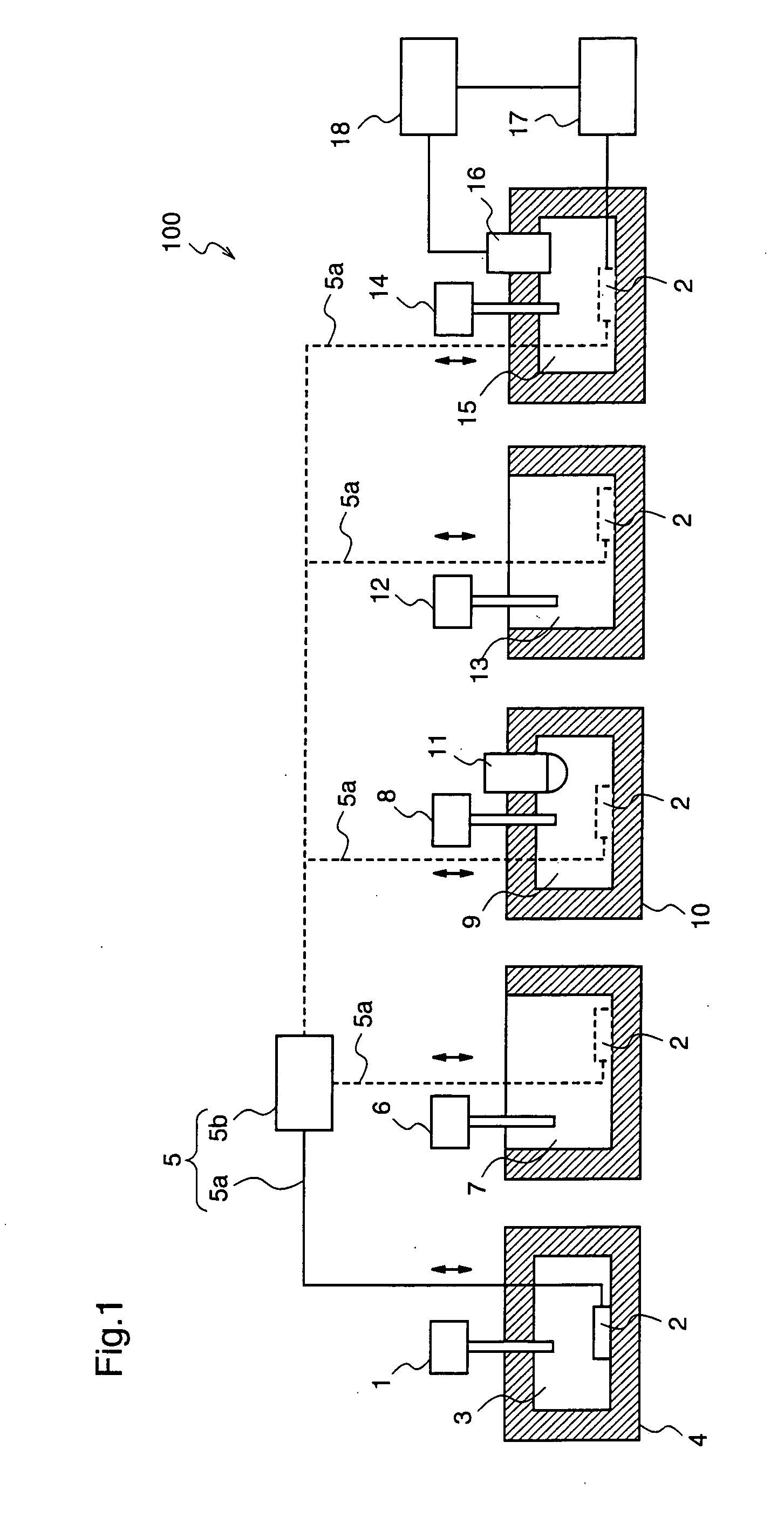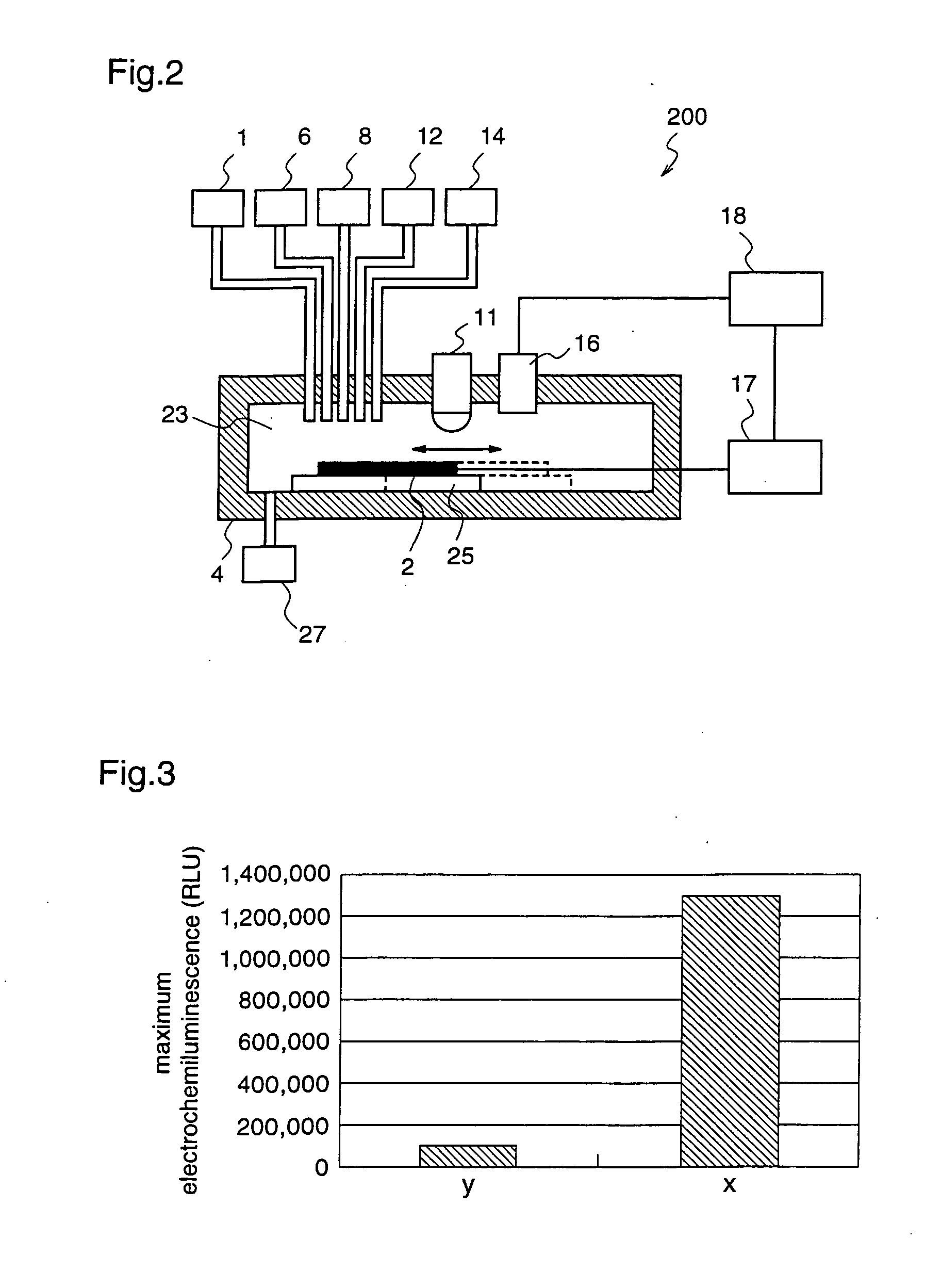Gene Detection Method and Gene Detection Apparatus
- Summary
- Abstract
- Description
- Claims
- Application Information
AI Technical Summary
Benefits of technology
Problems solved by technology
Method used
Image
Examples
embodiment 1
[0062]Hereinafter, a gene detection method according to a first embodiment will be described.
[0063]Initially, a gene sample to be a test object is formed. This gene sample is obtained by, as described above, a cell in an arbitrary sample is disrupted to release a double-stranded nucleic acid and then the double-stranded nucleic acid is denatured into a single-stranded nucleic acid by thermal treatment or alkali treatment.
[0064]At this time, the cell in the sample can be disrupted by an ordinary method, such as vibration or application of a physical effect such as ultrasonic wave from the outside. Further, it is also possible to release the nucleic acid from the cell by using a nucleic acid extraction solution (for example, a surface-active agent such as SDS, Triton-X, or Tween-20, or a solution including such as saponin, EDTA, or protease).
[0065]Next, a single-stranded nucleic acid probe having a base sequence that is complementary to the gene sequence to be detected is formed.
[0066...
embodiment 2
[0116]While in the first embodiment the plural tanks for performing the plural treatments on the electrode 2 are provided to perform the respective treatments with the different tanks, in this second embodiment, the respective treatments to the electrode 2 are performed with a single tank.
[0117]FIG. 2 is a diagram illustrating the construction of a gene detection apparatus according to the second embodiment. With reference to FIG. 2, the gene detection apparatus 200 has a processing tank 23 for performing the respective treatments onto the electrode 2. Reference numeral 25 denotes an electrode moving unit for moving the electrode in the horizontal direction in the processing tank 23. For example, a mechanism for horizontally moving a stage may be used. Reference numeral 27 denotes a waste solution tank into which the solution collected in the processing tank 23 is discharged.
[0118]The processing tank 23 contains the electrode 2 onto which the nucleic acid probe is immobilized, and t...
example 1
[0131]Hereinafter, a practical example of the present invention will be described, but the present invention is not restricted thereto.
(1) Immobilization of Nucleic Acid Probe onto Metal Electrode Surface
[0132]A gold electrode is prepared by depositing gold (200 nm) with titan (10 nm) as a base layer, on a glass substrate, by using a sputtering unit (SH-350 produced by UlVAC, Inc.), and then forming an electrode pattern in a photolithography process. The electrode surface is washed for one minute with piranha solution (hydrogen peroxide:concentrated sulfuric acid=1:3), and rinsed with pure water, and then dried by nitrogen blow.
[0133]As a nucleic acid probe, there is employed 40-base oligodeoxynucleotide (produced by TAKARA BIO INC.) which has a sequence of CCCCCTGGAT CCAGATATGC AATAATTTTC CCACTATCAT positioned in the 629-668th from the 5′-terminal of a gene sequence of human-derived Cytochrome P-450, and is modified with thiol group via phosphate group at the 5′-terminal. Then, the...
PUM
| Property | Measurement | Unit |
|---|---|---|
| Electric potential / voltage | aaaaa | aaaaa |
| Photosensitivity | aaaaa | aaaaa |
| Reduction potential | aaaaa | aaaaa |
Abstract
Description
Claims
Application Information
 Login to View More
Login to View More - R&D
- Intellectual Property
- Life Sciences
- Materials
- Tech Scout
- Unparalleled Data Quality
- Higher Quality Content
- 60% Fewer Hallucinations
Browse by: Latest US Patents, China's latest patents, Technical Efficacy Thesaurus, Application Domain, Technology Topic, Popular Technical Reports.
© 2025 PatSnap. All rights reserved.Legal|Privacy policy|Modern Slavery Act Transparency Statement|Sitemap|About US| Contact US: help@patsnap.com



